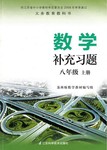题目内容
【题目】短文填空
As less people choose to make sugar paintings, the traditional Chinese folk craft might have become a (distance) memory in some ways. However, a 38-year-old craftsman, Li Jiangzhong, is committed to (keep) the art of sugar painting alive.
Li worked as a miner for more than ten years. After mine closed down, Li turned housing decoration, until he (force) to give that up due to a finger injury. Earlier this year, he discovered sugar painting, something he really had an interest in.
Since there was no sugar painting craftsman in his village, he studied by(he) through large quantities of videos and information on the Internet. Li loved painting when he was young, and he found it easy to learn the skill in sugar painting. He soon mastered the skill and could make a (vary) of sugar paintings. A sugar painting is made with (melt) brown or white sugar. Craftsman (normal) paint animals and flowers on a stone board with the syrup(糖浆). When the sugar cools down, appears is a piece of sugar art.
【答案】distant;keeping;the;to;was forced;himself;variety;melted;normally;what
【解析】本文讲述为了继承中国传统文化,38岁的李健忠回到老家,学习制作糖画的故事。
(1)考查词性转换。空处修饰名词memory,故填形容词distant(遥远的,久远的)。
(2)考査非谓语动词。一位38岁的手艺人李健忠致力于继承糖面艺术。be committed to中的to是介词,此处应用动名词,故填keeping。
(3)考査冠词。上文提到他做过十多年矿工,故此处表示他所在的矿井关闭以后,为特指,故用the
(4)考查介词。他转而去做房屋装修的工作了。 turn to“转而做,转向”。 故填 to。
(5)考查时态和语态。直到他因为手指受伤而被迫放弃。此处讲述过去的事情,故用一般过去时,且句子的主语和force之间是被动关系,应用被动语态。故填was forced。
(6)考查代词。由于他的村子里没有糖面手艺人,因此他自学(制作糖面)。by oneself是固定用法,表示“独自地,全靠自己地”,study by oneself“自学”,故填himself。
(7)考查词性转换。他很快掌握了这项技术并能制作出各种各样的糖画。a variety of“各种各样”,故填variety。
(8)考查非谓语动词。糖画通常用褐色或白色的融化了的糖做。糖是被融化的,故用过去分词作定语,故填melted。
(9)考查词性转换。手艺人们通常用糖浆在石板上画动物和花。修饰谓语动词用副词,故填normally。
(10)考查主语从句。分析句子结构可知,空处引导主语从句,且在从句中作主语,表示“所……的东西”,故填what。

 同步练习西南师范大学出版社系列答案
同步练习西南师范大学出版社系列答案 补充习题江苏系列答案
补充习题江苏系列答案 学练快车道口算心算速算天天练系列答案
学练快车道口算心算速算天天练系列答案